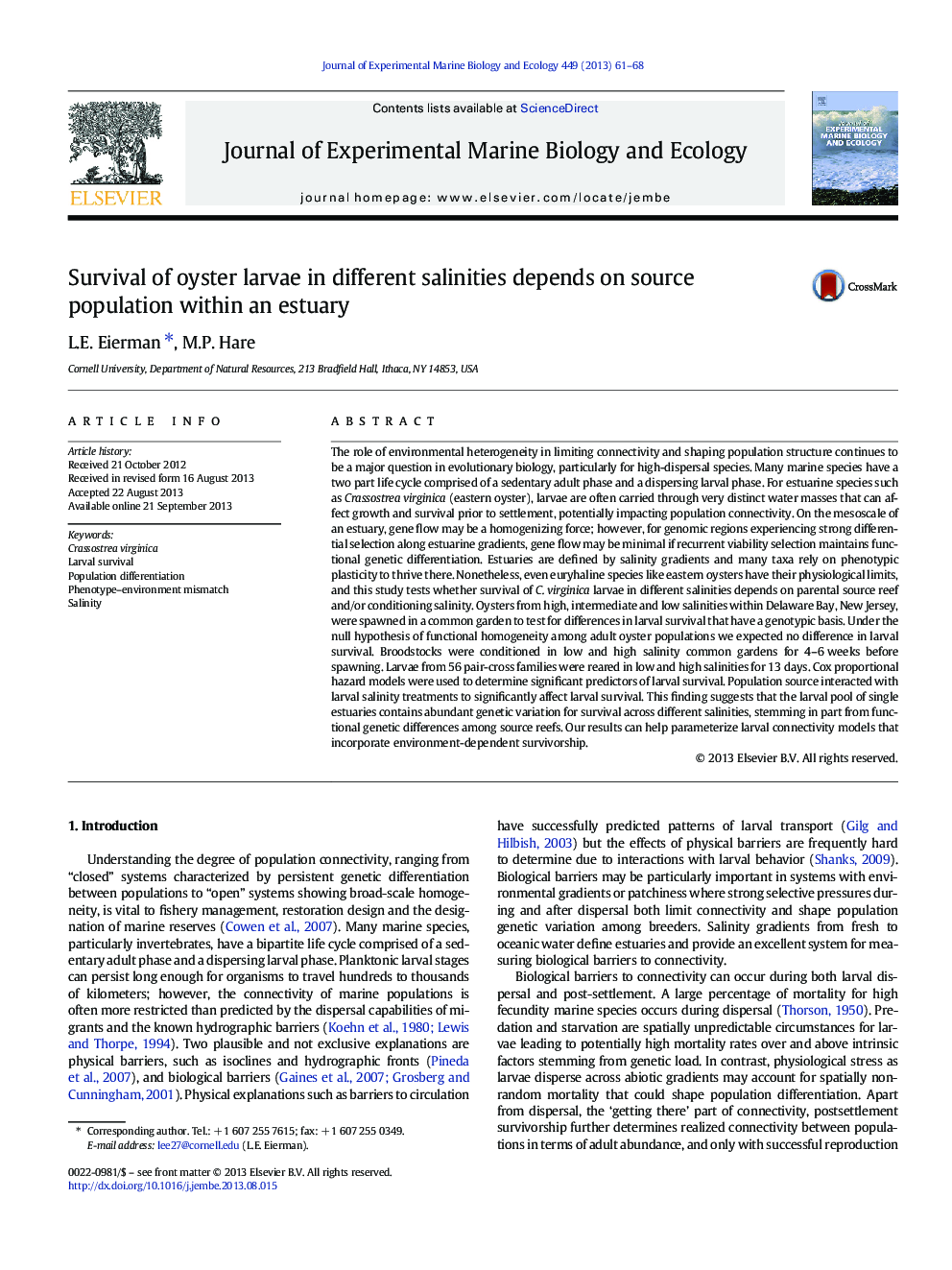| Article ID | Journal | Published Year | Pages | File Type |
|---|---|---|---|---|
| 6304250 | Journal of Experimental Marine Biology and Ecology | 2013 | 8 Pages |
Abstract
The role of environmental heterogeneity in limiting connectivity and shaping population structure continues to be a major question in evolutionary biology, particularly for high-dispersal species. Many marine species have a two part life cycle comprised of a sedentary adult phase and a dispersing larval phase. For estuarine species such as Crassostrea virginica (eastern oyster), larvae are often carried through very distinct water masses that can affect growth and survival prior to settlement, potentially impacting population connectivity. On the mesoscale of an estuary, gene flow may be a homogenizing force; however, for genomic regions experiencing strong differential selection along estuarine gradients, gene flow may be minimal if recurrent viability selection maintains functional genetic differentiation. Estuaries are defined by salinity gradients and many taxa rely on phenotypic plasticity to thrive there. Nonetheless, even euryhaline species like eastern oysters have their physiological limits, and this study tests whether survival of C. virginica larvae in different salinities depends on parental source reef and/or conditioning salinity. Oysters from high, intermediate and low salinities within Delaware Bay, New Jersey, were spawned in a common garden to test for differences in larval survival that have a genotypic basis. Under the null hypothesis of functional homogeneity among adult oyster populations we expected no difference in larval survival. Broodstocks were conditioned in low and high salinity common gardens for 4-6Â weeks before spawning. Larvae from 56 pair-cross families were reared in low and high salinities for 13Â days. Cox proportional hazard models were used to determine significant predictors of larval survival. Population source interacted with larval salinity treatments to significantly affect larval survival. This finding suggests that the larval pool of single estuaries contains abundant genetic variation for survival across different salinities, stemming in part from functional genetic differences among source reefs. Our results can help parameterize larval connectivity models that incorporate environment-dependent survivorship.
Related Topics
Life Sciences
Agricultural and Biological Sciences
Aquatic Science
Authors
L.E. Eierman, M.P. Hare,
